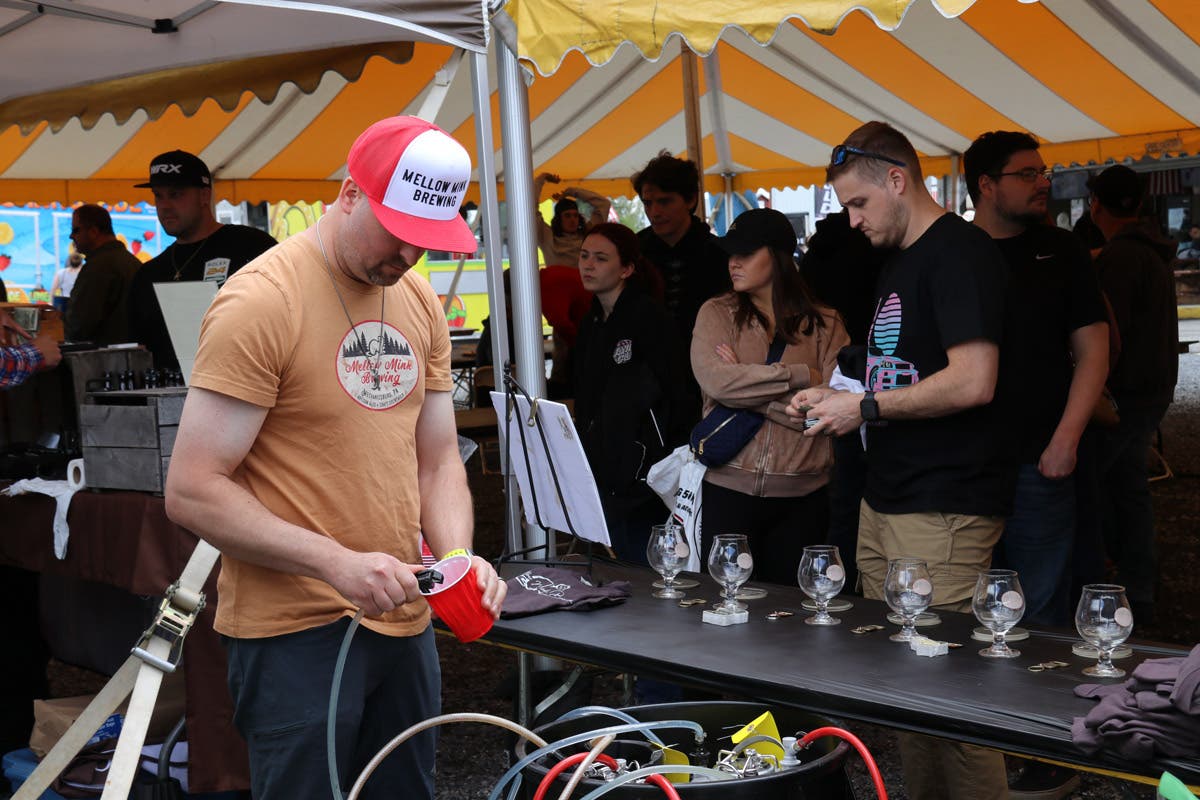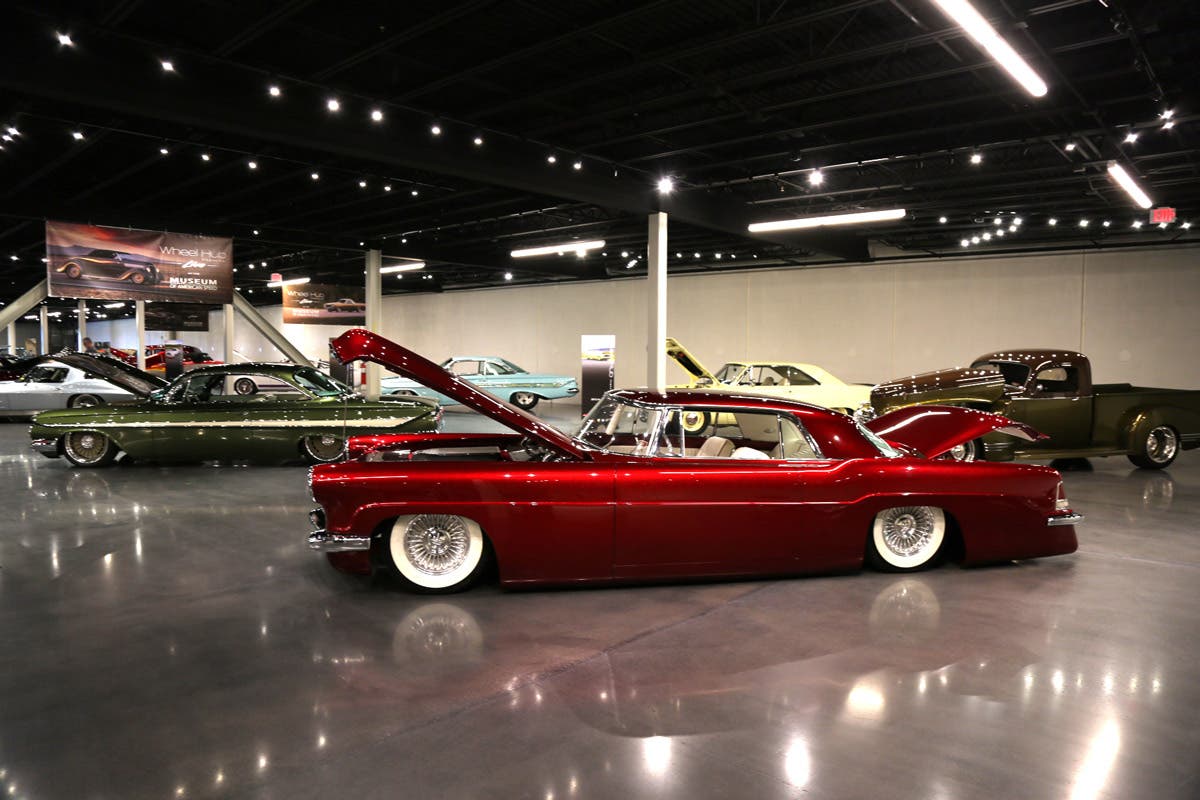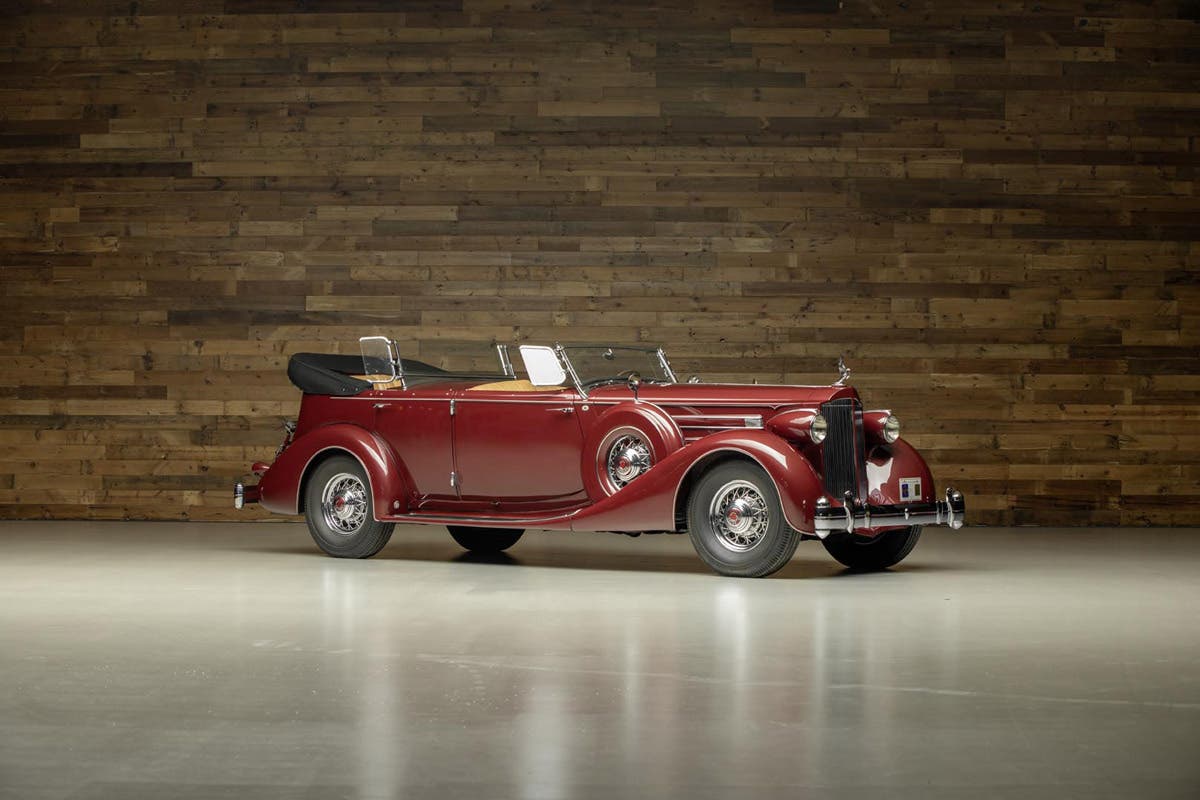70 years of Shoebox Fords
By Phil Skinner At the end of World War II, American automakers were in a pretty good position for getting back to the business at hand: building automobiles for a…
By Phil Skinner
At the end of World War II, American automakers were in a pretty good position for getting back to the business at hand: building automobiles for a car-starved public. From Dearborn, Mich., Ford — and nearly every other established U.S. car company — quickly facelifted their 1942 models in order to fill a void that had not been satisfied for nearly four years. While those immediate postwar days proved to be a sellers’ market, everyone in the industry knew that this was a temporary situation. New and improved modern models were going to be needed. Before America entered the war, Ford’s Chief Stylist, E. T. “Bob” Gregorie, had already been working on the next generation of cars for the entire company line. These new designs provided a family look across the board for Ford, Mercury and Lincoln.
In the fall of 1945, 10 brilliant young veterans, who had helped developed America’s military logistics systems banded together under the leadership of Colonel Charles “Tex” Thorton, approached Henry Ford II with an offer to help the ailing automaker. While Ford Motor Co. had survived the war with lucrative government contracts, the company was bleeding red ink in the postwar days. If a company ever needed help, it was Ford. This group of young officers didn’t know much about building cars, but they understood success and business. Made up of future leaders such as Ben Mills, F. C. “Jack” Reith, Arjay Miller and Robert S. McNamara, the group was collectively known as the “Whiz Kids.” They delivered on their promises with new ideas, analyzed points that were leaking dollars and got to work fixing them.
There were a couple of car guys in the mix and when they got a sneak-peak in early 1946 of the proposed upcoming Fords slated for introduction during 1948, they gave a collective thumbs down. In their opinion, Gregorie’s design was dated as well as too massive and bulky. Henry Ford II seemed to agree and a decision was made to have a competition for a new car design.
Within weeks, two different proposals were received. One proposal came from Gregorie’s in-house team of stylists. The second came from an outside firm operated by George Walker. While both cars were an improvement over the original design, the general consensus was that Walker’s team won the contest. Within a couple of years, Walker would be the head of Styling for Ford, bringing with him talented young industrial designers such as Joe Oros and Elwood Engel. Gregorie resigned from Ford, but his proposals for the new large Lincoln Cosmopolitan plus a new “baby” Lincoln, which shared the new Mercury’s basic body envelope, did end up in production. Even the rejected Ford design made it to production after being shipped to Ford’s French operation where this car was successfully marketed at the Vedette.
From approved design to production in just over two years — break-neck speed for the auto industry — the new designs for the 1949 Ford were fine-tuned and tooled up for production. On June 8, 1948, New York City’s famed Waldorf-Astoria Hotel was home to the first public showing of Ford’s new “Forty-Niner.” In a spectacular display including a merry-go-round featuring the all-new models in bright new colors with plenty of chrome, the crowds stood in awe. On a Ferris-wheel type of a display, two brand-new chassis twisted, turned and spun to show off their ladder-type construction, the new semi-elliptic rear leaf springs and the Hotchkiss drive system. All around the huge ballroom were cut-away displays of the engines, transmission and other systems that made up Ford’s legendary performance. Visitors marveled at the new front suspension that used coil springs and shock absorbers that, combined with a smoother steering system and improved brakes, were hailed as major improvements by the automotive press.
However, the new Ford’s mechanical features were concealed by the beautiful new sheet metal design. Up front, the first feature most people see when looking at a car, was a simple yet bold statement in chrome: a single horizontal plane with a large chrome “bullet” in the center. Headlamps were mounted high in the fenders and the sides of the cars were elegant with only a minimum of side trim. There were no bulges or signs of separate front or rear fenders, nor did the doors skirt out at the bottom to conceal a running board. The new design gave more passenger shoulder and leg room while providing nearly double the usable luggage capacity in the trunk. Small oval taillamps flared into the rear quarter panels and provided an accent line that was a real eye catcher. This car was cutting-edge, mid-century modern all the way.
Under the hood, performance was improved with the 100-hp V-8 being optionally available while a strong dependable inline six-cylinder engine was considered the base engine for most models. A total of nine body styles were offered. The base trim level offered club and business coupes plus two- and four-door sedans. In the Custom line there was a club coupe, two- and four-door sedans, a smart convertible as well as an all-steel-bodied two-door station wagon with real wood trim.
Ford had a distinctive advantage in the sales race for 1949 by effectively offering the 1949s for more than 18 months. During that time, a total of 1,118,740 Fords were produced, besting Ford’s nearest competitor, Chevrolet, by more than 100,000 units. Using new manufacturing techniques, production costs were reduced. New labor contracts were drawn up that benefitted both those building the cars and the company. More important, all these steps helped turn around the company’s fortunes and by the introduction of the 1950 models, Ford was showing black ink where there had been red.
As stunning and revolutionary as the new Forty-Niner was, these new models had their faults. Initial production saw bodies that had rattles and groans, plus leaks that allowed the intrusion of dust, water and wind. However, Ford’s policy of constant improvement addressed many of these issues as running changes during the year.
By the time the next year’s models were introduced, Ford was proud to announce, “Fifty Way Finer for 1950.” Little things such as concealed trunk hinges, the fuel filler being concealed behind a closing door, improved suspension and body construction that was rigid and tight were among the improvements. 1950 also saw the introduction of Ford’s famous “Keystone” logo, proudly displayed on the hood of every new Ford. The base trim was now marketed as the Deluxe line, which was missing the club coupe for 1950, and was joined by the new Custom Deluxe trim level. The well-appointed Custom Deluxe line paralleled the 1949 Custom line. However, to combat the popular new Chevrolet Bel Air hardtop, a special edition of the Tudor was created and named Crestliner. Featuring a side cove with a dramatic two-tone effect framed by bright stainless-steel trim and Ford’s first use of a vinyl roof, it found a mere 17,601 buyers. Similar better-trimmed coupes were created for Ford’s companion makes; Mercury added the attractive Monterey, the “baby” Lincoln line added the Lido and the “big” Lincoln Cosmopolitan line featured the Capri. Production rose to 1,206,739 units for the 1950 Ford, but was now more than 160,000 units shy of Chevrolet’s total.
Going for a third year using the “shoebox” body design, the 1951 Ford saw quite a few improvements. The single large, bullet-nose grille was altered to two smaller points moved closer to the outer edges of the grille opening. Large chrome nacelles were created for the taillight bulges on the quarter panels, and larger red lenses were employed. Sharp, new dashboards decorated the interior for all models except the newly christened Country Squire two-door station wagon. The 1951 model lineup reflected that of the 1950 body styles with three offerings in the Deluxe or base series and six in Custom Deluxe line, including the return at the start of the year of the “Tudor Crestliner” two-door sedan. In June 1951, Ford introduced its very first true pillarless hardtop with the Custom Deluxe Victoria. This body style caught on like wildfire and by the end of the model year in December, more than 110,000 copies had been produced, making it America’s most popular hardtop for 1951.
For 1951, Ford touted a total of 41 new innovations plus the introduction of the Ford-O-Matic, a three-speed automatic transmission that’s shifting sequence of Park-Reverse-Neutral-Drive-Low would soon become the industry standard many others would follow. Other innovations promoted in the 1951 Ford ranged from turn-key ignition, to new front coil-springs and variable rate rear springs, to little items such as redesigned hood ornament and V-8 emblems on those cars fitted with the optional engine.
While Ford touted all those improvements and continued to be the only car in the “low-priced three” to offer V-8 power, Chevrolet trounced Ford in the production race by nearly 240,000 units.
There is no doubt that the “Forty-Niner” and its immediate successors saved Ford Motor Co. from going under in those postwar years. Hot-rodders and customizers found these Fords to be perfect starting points for dream and show cars as well as competition vehicles that tore up the tracks from coast-to-coast. In later years, avid fans gave them the nickname “Shoebox” which was today covers this exciting era of Ford first fully new postwar designs, designs that would set the tone and direction of the company for decades to come.








